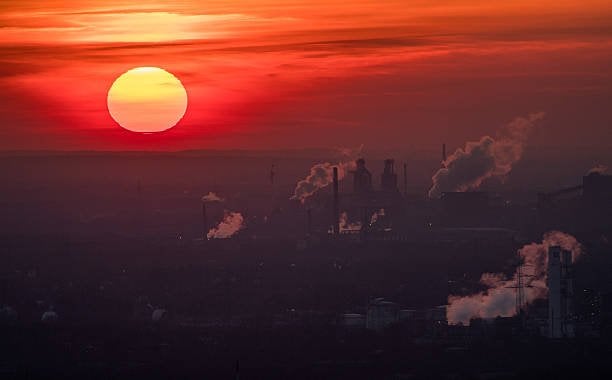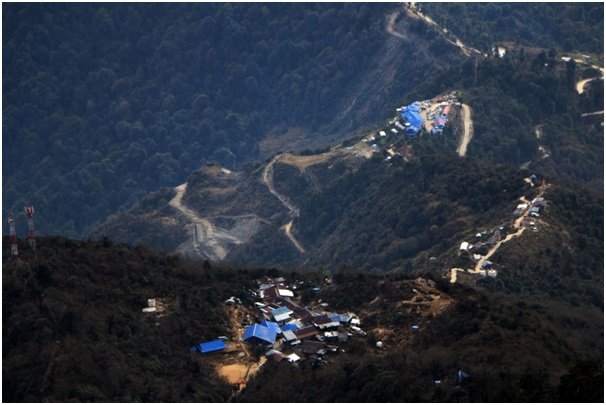From Industrial Revolution to Ecological Collapse

KATHMANDU — The global environment is in a state of crisis posing a threat to human civilization. The central problem stems from the growing imbalance between human development and environmental health. The man and nature is in colliding state. This ongoing environmental decline is becoming major problem for future generations' survival and well-being.
Human’s relationship with nature is deteriorating. Since the Industrial Revolution, human activities have accelerated environmental decline. The development of industries and modern lifestyles has lead to deforestation, pollution, and global warming. As a result, nature is reacting negatively in various forms such as Glacial Lake Outburst Flood (GLOF), which are becoming more frequent as glacier melts.
The current decline in global environmental health includes the impact of air pollution on human health. Each year 7 million people die due to air pollution, mostly by contributing to heart disease, respiratory disease and cancer. The air we breathe is becoming toxic. Pollution is not just limited to air, noise pollution is another increasing concern. Noise pollution is leading to premature hearing loss. The environment is completely contaminated with toxins leading to situation in which there is poison everywhere. From food we eat to water we drink.
Around the world, we can clearly witness signs of environmental decline. Snow-capped mountains are losing the snow and wildlife is under the threat. Many plants and animals have already gone extinct and many rare species are on verge of extinction. The decline of pollinators such as bees, threatens global food production. Fisheries are collapsing and the population of rare animals and plants are declining.
The frequency of wildfires has increased dramatically in recent years. These fires devastate wildlife habitats, forcing animals to flee or many end up losing their lives. In the areas like the Amazon Rainforest and Australia, entire ecosystems are being wiped out, causing irreversible damage to biodiversity.
The root causes of this decline are mainly human activities. The rapid pace of population growth is putting immense pressure on the planet’s resources. Every 12 years, the population increases by one billion creating huge demand for food, water and energy. However, resources are limited.
Before industrialization, around 45% land was covered by forest, but this has now been reduced to 25%. Deforestation which is driven by human consumption pattern is contributing to environmental degradation. One of the most impactful consumption patterns is the high demand of meat. Our growing demand for meat and dairy food products is unsustainable. Meat and dairy production often lead to deforestation, forests are cleared to create grazing land or to grow feed crops such as soy. The environmental impact extends to water usage as well. It takes thousands of liters of water to produce a single kilogram of meat, far more than what is required for plant-based food production. This includes water used to grow feed crops, provide drinking water for animals, and maintain facilities.
Environmental health decline has wide-ranging consequences. One often overlooked result is the strain on households, especially on women who are usually responsible for gathering water, food and firewood. As these resources become scarce, women have to spend more time and effort to meet household needs, leading to increased stress and in some cases domestic violence. On a larger scale, environmental degradation leads to loss of diversity, soil erosion, water shortages and more frequent natural disasters like landslides all of which threaten human survival.
Although we are divided by civilization and natural boundaries, but we share the same biosphere. Air, water, deforestation and global warming don’t respect these divisions. For example, carbon emissions produced in one country contribute to global warming which affect weather patterns and sea levels thousands of miles away.
Environmental degradation and the loss of biodiversity also leads to emergence of new diseases and pandemics. As natural resources become depleted, food and water scarcity became more common declining the quality of life. The interconnection between environmental health and human health highlights the need for sustainable resource management and biodiversity conservation to prevent the onset of new diseases and protect global well-being.
We can pursue towards several solution to reduce this crisis. The principle of Reduce, Reuse and Recycle can help minimize waste, conserve resources, and protect ecosystems. Planting trees and restoring natural habitats can contribute to restore the damage caused by the deforestation. Shifting from non-renewable energy to renewable energy such as wind and solar can reduce greenhouse gas emissions and slow down the climate change. Additionally, putting a price on carbon emissions can encourage businesses and people to lower their carbon footprint. By making it more expensive to pollute, it pushes everyone to choose cleaner options and use greener technologies.
(Helina Shrestha is a 12th-grade student at GoldenGate International College in Battisputali, Kathmandu. She enjoys reading novels, writing, and painting as her hobbies.)










Leave Comment